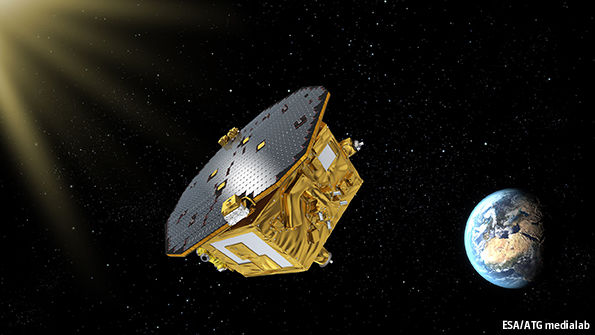-
Tips for becoming a good boxer - November 6, 2020
-
7 expert tips for making your hens night a memorable one - November 6, 2020
-
5 reasons to host your Christmas party on a cruise boat - November 6, 2020
-
What to do when you’re charged with a crime - November 6, 2020
-
Should you get one or multiple dogs? Here’s all you need to know - November 3, 2020
-
A Guide: How to Build Your Very Own Magic Mirror - February 14, 2019
-
Our Top Inspirational Baseball Stars - November 24, 2018
-
Five Tech Tools That Will Help You Turn Your Blog into a Business - November 24, 2018
-
How to Indulge on Vacation without Expanding Your Waist - November 9, 2018
-
5 Strategies for Businesses to Appeal to Today’s Increasingly Mobile-Crazed Customers - November 9, 2018
European Space Agency ready to launch gravity probe
“When a gravitational wave is produced, for example when two massive back holes at the centre of galaxies smash into each other, it creates these ripples in space-time”, said McNamara.
Advertisement
This level of precision is required as it is believed that space-time is largely rigid and only deforms as a result of extraordinary forces.
European mission to test technology that scientists hope will confirm the existence of gravitational waves. “Not only are these technologies new, they can not be properly verified on the ground”, ESA wrote. Small changes in distance would indicate the slight flexing of space and time which would indicate the presence of gravitational waves. With gravitational waves as an important matter of LISA’s mission, the project pushed until it was finally finished.
eLISA is a complex mission.
Arvind Parmar, head of ESA scientific support office, said: “Detecting gravitational waves is extremely hard”. Albert Einstein made this theory related to general relativity more than 100 years ago.
The spacecraft has two small identical cubes of solid gold-platinum alloy onboard.
In order to get away from any noise or interference from Earth’s gravity, LISA Pathfinder will travel to Lagrange point 1 (L1), 1.5 million kilometers (around 1 million miles) from Earth, where the gravitational tug of two objects – the Earth and sun – reach an equilibrium.
En route to the final orbit, the two test masses will be released from the locking mechanisms that hold them during launch and cruise. Each test mass will be suspended in separate vacuum chambers lined with electrodes to help keep the cubes in near flawless free-fall.
LISA Pathfinder will operate as a physics laboratory in space. The launch – initially delayed 24 hours – is set to launch at 04:04 UTC from the European spaceport at Kourou, French Guiana.
Engineers had checked a technical problem that had been discovered in the Vega rocket and postponed the lift-off into orbit which was initially planned for Wednesday. LPF is expected to reach its operational orbit about 10 weeks after launch on February 13.
“We use the laser interferometer to bounce light between the proof masses and the optical structure that we built in Glasgow”, Harry Ward, of Glasgow University in the United Kingdom, told BBC News. “The prime objective of this is technology demonstration, but it’s more than just a yes/no answer”. Despite its ability to distort space, it’s measured in picometers: a picometer equals one trillionth of a meter, or one hundredth the size of an atom. ESA selected the gravitational universe science theme for its third Large Class L3 mission, for which a LISA-like mission is a leading candidate.
The 4,202-pound (1,906-kilogram) LISA Pathfinder spacecraft deploys from the AVUM fourth stage of the Vega rocket.
Advertisement
ESA provided cold gas nitrogen thrusters for LISA Pathfinder to check their performance in a similar way.




























